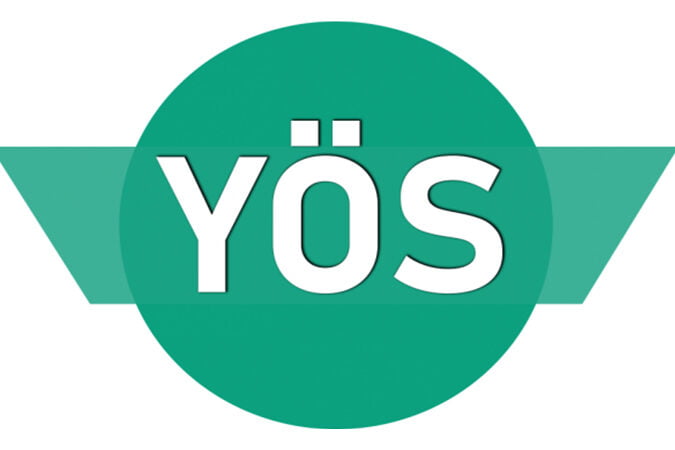Mastering Turkish pronunciation is a crucial step for anyone aiming to become proficient in the language, whether for academic pursuits, professional growth, or personal enrichment. At Turkish Council, we understand the unique challenges that learners face when tackling the sounds and rhythm of Turkish. With our extensive experience in educational consulting and language instruction, we are dedicated to providing comprehensive support to help you achieve your language goals. In this article, we will share essential tips and techniques to enhance your Turkish pronunciation, making your language journey smoother and more rewarding. Explore our expert advice and take a confident step towards fluency in Turkish.
Mastering Turkish Vowel Harmony: Key to Fluency
Understanding and mastering Turkish vowel harmony is essential for achieving fluency in the language. Vowel harmony, a fundamental aspect of Turkish grammar, dictates that vowels in a word harmonize to be either front or back vowels, creating a seamless and melodious flow when speaking. Familiarize yourself with the eight vowels in Turkish: A, E, I, I, O, Ö, U, Ü, and categorize them into front (E, I, Ö, Ü) and back vowels (A, I, O, U). This knowledge will not only enable you to correctly conjugate verbs and form plurals but also enhance your overall pronunciation, making your speech sound more natural and native-like. Consistent practice with vowel harmony rules will pave the way for a deeper understanding of Turkish phonetics and a smoother, more intuitive learning experience.
To effectively master vowel harmony, start by practicing with common Turkish words and phrases, paying close attention to how vowels are paired within each word. Use resources such as flashcards, language apps, or pronunciation guides to reinforce your understanding of which vowels harmonize together. Listening and repeating after native Turkish speakers, whether through language exchange partners, online videos, or Turkish media, can significantly boost your retention of vowel harmony patterns. Additionally, engaging with linguistically rich environments like Turkish Council’s interactive language courses can offer you the immersive practice needed to internalize these rules. By making vowel harmony a regular part of your study routine, you’ll find that your ability to pronounce words correctly and fluently will markedly improve.
Another effective approach to mastering Turkish vowel harmony is through the practical application of speaking and writing exercises. Engage in daily conversations, even if they are short, to practice the harmony rules in real-time context. Writing simple sentences or keeping a journal in Turkish can also reinforce your grammatical understanding. Pair these activities with regular feedback sessions from native speakers or language instructors to correct mistakes and refine your pronunciation. Making use of tongue twisters and specific pronunciation exercises designed for Turkish learners can also be highly beneficial. At Turkish Council, we provide ample opportunities for immersive practice through our tailored lessons and interactive teaching methods, ensuring that you not only understand vowel harmony theoretically but also apply it effortlessly in your everyday communication.
Effective Techniques for Perfecting Turkish Consonants
One effective technique for perfecting Turkish consonants is to focus on the unique sounds that do not exist in English. Pay particular attention to the soft ‘g’ (g) and the dental consonants like ‘t’, ‘d’, ‘r’, which are produced with the tongue touching the back of the teeth. Practicing these sounds in isolation, and then in words, helps build familiarity. Use phonetic guides and listen attentively to native speakers, mimicking their pronunciation to grasp the subtleties of each consonant. Engaging in audio repetition exercises and recording yourself can also be beneficial, as it provides an opportunity to compare your pronunciation with that of native speakers, making it easier to identify and correct errors.
Another important technique is to practice consonant clusters, which are combinations of two or more consonants without intervening vowels. These clusters can be challenging, especially for beginners, as Turkish includes unique combinations not commonly found in other languages. Start by breaking down the clusters into individual sounds, then gradually blend them together. For example, practice saying “beygir” (horse) by slowly merging the ‘b’ and ‘ey’ sounds. Phonetic drills focusing on problematic clusters will help you gain confidence and improve your articulation. Additionally, reading aloud from Turkish texts, such as newspapers or books, reinforces proper pronunciation patterns and increases your comfort level with complex consonant formations.
Incorporating consonant minimal pair exercises can significantly refine your Turkish pronunciation skills. Minimal pairs are words that differ by only one consonant sound, such as “kal” (stay) and “gal” (come), which helps in distinguishing subtle differences in pronunciation. Regularly practicing these pairs sharpens your phonetic sensitivity to the slight variations between similar sounds. Furthermore, engaging in targeted tongue twisters and pronunciation drills can be a fun yet effective way to enhance your fluency in challenging consonant transitions. At Turkish Council, we offer tailored exercises and resources specifically designed to target these tricky areas. By consistently dedicating time to these focused practice techniques, you’ll notice a marked improvement in your ability to produce clear and accurate Turkish consonants, paving the way for greater linguistic confidence and overall language mastery.
Common Pronunciation Pitfalls and How to Avoid Them
One of the most common pronunciation pitfalls in Turkish is the mispronunciation of vowel sounds. Turkish has eight vowel sounds, each of which must be enunciated distinctly. For instance, the difference between ‘e’ (as in ‘bed’) and ‘é’ (as in ‘bet’) is subtle but crucial for both meaning and clarity. Additionally, the vowels ‘i’ and ‘i’ can be particularly tricky for English speakers, as they are pronounced differently in Turkish. To avoid these common errors, it is essential to practice listening and repeating these sounds in various word contexts. Using audio resources, engaging in focused listening exercises, and receiving feedback from native speakers or proficient instructors at Turkish Council can significantly help in mastering these nuances. In our courses, we emphasize these distinctions through targeted drills and interactive practice to help you gain confidence and accuracy in your pronunciation.
Another frequent challenge learners face is mastering Turkish consonant sounds, particularly the softer and harder variations that do not exist in English. For example, the ‘g’ sound, often called ‘yumusak ge’, is unique and can be difficult for beginners to pronounce correctly as it lengthens the preceding vowel rather than creating a hard ‘g’ sound. Additionally, distinguishing between ‘s’ and ‘s’, or ‘ç’ and ‘c’ is vital for clear communication. To overcome these obstacles, it is beneficial to use minimal pairs practice, where words that differ in only one sound are repeated until the distinct pronunciation is internalized. Taking advantage of tongue placement tutorials and vocal exercises provided by Turkish Council can also enhance your accuracy. Our experienced instructors can offer personalized feedback, ensuring that you grasp the subtle differences and achieve a more native-like pronunciation.
Intonation and stress are additional areas where learners commonly struggle, as Turkish intonation patterns differ notably from those in other languages. Turkish utilizes a relatively flat intonation with stress usually falling on the last syllable of words, which can be counterintuitive for speakers of languages like English or Spanish. Misplacing stress can not only alter the meaning of words but also make your speech sound unnatural. To master Turkish intonation and stress, it is essential to pay close attention to native speakers and emulate their patterns. Practicing with sentence examples and recording yourself can provide insight into your progress. Enrolling in Turkish Council’s pronunciation classes can also provide you with structured practice, where our professional instructors guide you through exercises that target intonation and stress patterns, ensuring you develop a more authentic speech rhythm.





